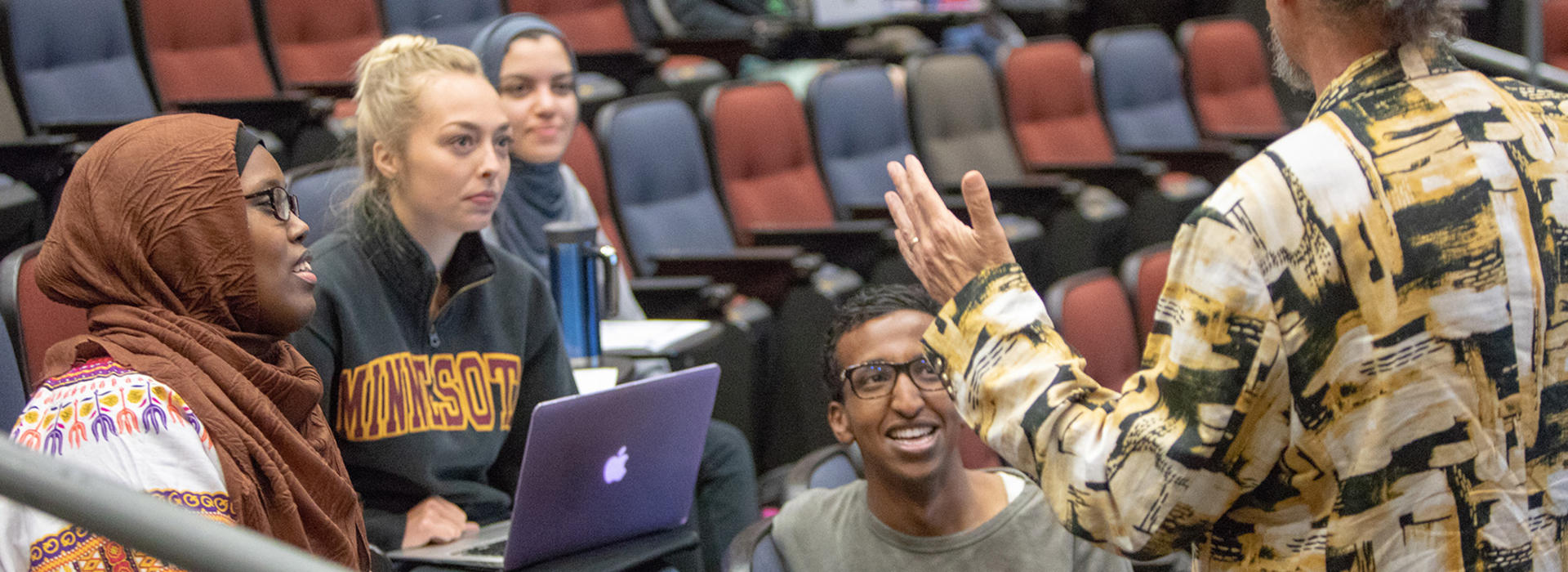
New Policy Maxes Medical Student Workload at 60 Hours Per Week
As part of the 2018 five-year strategic plan focused on undergraduate medical education at the University of Minnesota Medical School, an Academic Workload Task Force recently proposed recommendations that limit the number of contact hours for first-year and second-year medical students. Their proposal, approved at a mid-October meeting, works to reduce the negative consequences of cognitive overload and burnout among students.
“In my first two years at the Medical School, the workload was just barely manageable while life is going well. However, when curveballs inevitably come—whether it is illness, family stressors, mental health crises—the workload rapidly becomes overwhelming, preventing effective management of either school or the other components of life,” said Tobias Donlon, a current third-year student who served on the task force. “This new policy will also be a tool to help professors identify the most crucial information and will encourage application of innovative teaching strategies to push our Medical School toward the forefront of medical education.”
The task force, comprised of students, administrators and faculty from both the Twin Cities and Duluth Medical School campuses, interviewed current students and found that the total time students dedicate to classes and studying should not exceed an average of 60 hours per week.
“Our committee reviewed workload standards from other areas of medical training and asked, ‘Should we mirror our policy to make it the same as the residency upper limit of 80 hours per week?’ We just thought, ‘No,’” said Kaz Nelson, MD, an associate professor and vice-chair of Education in the Department of Psychiatry, who also served in the role of chairperson for the task force. “At the undergraduate level, we don’t need to emulate this intense workload. Burnout and cognitive overload have real consequences to learning. We see people that are studying non-stop. There is a cost to that for the health of the student, and we want to prevent harmful outcomes. We should not have so many contact hours that students don’t really have a choice but to study all the time.”
The policy also states that the Medical School and faculty should begin designating levels to their courses. Level 1 courses would require in-person attendance because they offer small groups, labs or interactive large group sessions, while Level 2 courses would not require in-person attendance because they offer recorded didactic sessions that may be studied and learned remotely. Additional elements of the policy state the time between these required sessions should be consolidated during the day to allow students maximum flexibility in managing their schedule and learning activities.
“The hope is that there’s actually enhanced learning—that people graduate more knowledgeable and with a higher degree of personal and professional wellbeing,” Dr. Nelson said. “It’s not about learning less or being less prepared. We think that by not cognitively overloading people, they will be healthier, more prepared and more skillful to begin their clinical years and residency training.”
To ensure that faculty have enough time to adjust courses and content, the policy states that the Medical School should be in full adherence to the policy by Fall 2021. In the interim, the Medical School will continue to evaluate the workload limit by surveying students through evaluations at the end of each course, starting this year.
A similar policy was revised and approved in December 2018 for third-year and fourth-year students. This policy limits rotation duty hours and requires at least 10 hours of rest between work periods. In June, a decision was made by the Education Council to monitor duty hours, then investigate changes further with a pilot group and revisit the policy later on.